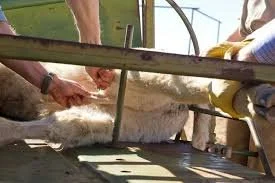The Importance of Castrating Calves, Lambs, and Kids: A Guide for Hobby Farmers and Small Producers
Castration is a key aspect of livestock management that offers significant benefits for both animal welfare and farm operations.
For hobby farmers and small producers in Australia, understanding the importance of this practice, as well as the optimal timing and methods, can enhance herd and flock productivity while ensuring compliance with animal husbandry standards.
Why Castrate Livestock?
1. Improved Behaviour
Castrating male calves, lambs, and kids reduces aggressive and territorial behaviours often associated with intact males. This leads to calmer animals, easier handling, and fewer injuries among livestock. A tranquil herd or flock also contributes to safer working conditions for farmers.
2. Better Meat Quality
Castration is known to enhance the quality of meat by reducing the risk of undesirable flavours, particularly from older males. The process also allows animals to grow more evenly, producing tender and marbled cuts that are preferred in the marketplace.
3. Preventing Unwanted Breeding
By castrating males, farmers can control breeding programs more effectively. This is especially important for hobby farmers and small producers who may have limited grazing space and wish to maintain a manageable herd or flock size.
4. Genetic Control
Castration prevents unwanted breeding, allowing for better control over genetic gains through selective mating. This ensures that only the best genetics are passed onto future generations. Cross breeding and breeding with less desirable breeds can cause genetic defects to the offspring, to the offspring being worth less when selling and birthing issues such as the male genetic being to big for A first time birthing female.
5. Health Benefits
Castrated animals are less prone to certain diseases and conditions, such as urinary calculi in goats. It also reduces the risk of injuries from fighting and aggressive behaviour.
When to Castrate?
The timing of castration is critical to minimize stress and pain for the animal while maximizing the benefits. In Australia, the National Animal Welfare Standards provide guidance on best practices for castration:
Calves
Age: Ideally, calves should be castrated between 2 to 6 weeks of age. At this stage, the procedure is less stressful and heals more quickly.
Why this timing? Young calves have less developed nervous systems, resulting in reduced pain perception. Their small size also makes handling and restraint easier.
Lambs
Age: Lambs should be castrated between 2 to 12 weeks of age, with the procedure ideally performed as early as possible within this range.
Why this timing? Early castration minimises behavioural stress and reduces the risk of complications. For lambs intended for meat production, early castration supports optimal growth and carcass quality.
Kids (Goats)
Age: Kids should be castrated between 2 to 6 weeks of age.
Why this timing? Similar to lambs and calves, early castration in kids reduces stress and promotes faster recovery.
Methods of Castration
Selecting the appropriate method is vital for ensuring animal welfare. Common methods include:
1. Rubber Ring or Banding
How it works: A tight rubber ring is placed around the base of the scrotum, cutting off blood supply to the testes.
Best for: Young animals under 6 weeks of age.
Advantages: Simple and low-cost, with minimal blood loss.
Considerations: Ensure that animals receive appropriate pain relief and monitoring.
2. Surgical Castration
How it works: The testes are removed via an incision in the scrotum.
Best for: Older animals or when other methods are not feasible.
Advantages: Immediate and definitive, with predictable outcomes.
Considerations: Should be performed by a trained individual, with pain management and infection control measures in place.
3. Emasculator or Clamp
How it works: A clamp crushes the spermatic cords, disrupting blood flow to the testes.
Best for: Young to moderately aged animals.
Advantages: Bloodless and quick.
Considerations: Proper technique and training are essential to avoid complications.
Legal and Ethical Considerations
In Australia, animal welfare legislation emphasises minimising pain and stress during procedures like castration. Farmers are encouraged to:
Use appropriate pain relief (e.g., local anaesthetics or analgesics).
Follow recommended age guidelines.
Ensure proper training or seek professional assistance if needed.
Additionally, some states may have specific requirements regarding the use of castration tools and the necessity of veterinary involvement.
Final Thoughts
Castration is a vital practice that supports better behaviour, meat quality, and breeding control in livestock. By adhering to recommended ages and methods, small producers and hobby farmers can ensure the health and productivity of their herds and flocks while upholding the highest standards of animal welfare.
*Disclaimer If you’re new to livestock management, consult your local veterinarian or livestock advisor for guidance tailored to your unique operation. With proper planning and execution, castration can be a straightforward and beneficial part of your farm management strategy.

